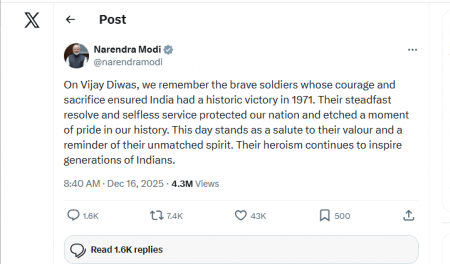- Sqn Ldr Munim Khan Majlish, psc
(Bimansena XXXIII, June 2004)
INTRODUCTION
1. Prithoo, my three years old son is yet to start his school. He worried his mom, as he could not learn the nursery rhymes yet. When all of our efforts to educate him had been failed, he amazed us by his self-obtained skills. He can comfortably murmur almost all the latest Hindi film songs. “Hum ko humesha churalow”, or “Muhabbat hai”- are nothing but the Greeks to his grand mother; even I do not understand those clearly. But my infant child gets immense pleasure by whispering those songs while doing his day-to-day activities. He does all those things spontaneously. Such is the reality in todays so called open world for the societies of the developing countries. Cultures, heritages, traditions and above all the languages of the minority communities of the Earth are threatened by the aggression and colonial attitude of the majority few. Mighty masters are not only controlling the socio-economical state of the peoples of the society but also dictating their cultures, traditions and languages. Among other reasons superpowers are also prescribing the citizens of the open world to follow their cultures, traditions and even the language of the states concerned along with the financial policy. As a result, except a few, most of the languages of the world are at the brink of extinction. Minority communities of Bangladesh are also facing pressure from the minority Bengali communities. However, the situation around the world is not that frustrating that we may forecast. Despite many barriers some very brave societies are defending their languages firm and preventing those evil factors to weaken the state of their languages. Among other developed nations citizens of the developing societies are contributing a lot to defend their mother tongues and in some cases reviving their beloved languages.
AIM
2. To analyse the present situation of the languages throughout the world, find out the reasons of language extinctions and discuss the possible steps to save these languages from disappearance.
ALARMING EVIDENCE
3. A language dies only when the last person who speaks on that language dies. Or more likely it dies when the second last person who speaks on it dies. Because then there will be none left to talk in that particular language. It is actually the death of that particular community.
4. It is not unusual about a single language dying. We know that the civilisations have come and gone throughout history. Unfortunately with the disappearances of civilisations their languages also perished forever. There’s none to speak on Maya, Mesopotamian or Mohenjodara language now. The Hittite language disappeared when the great Hittite Civilization disappeared in Old Testament times. But what is happening today is something alarming. It is the language extinction on a massive scale. Today almost all the languages of the world are under attacked by a very few powerful languages or cultures. In near future we must not be surprised to find our grand children consulting dictionaries to understand their parents’ Bengali conversations.
5. If we find a language with just a few speakers left, and nobody is bothering to pass the language on to the children, we may conclude that the language is bound to die out soon. Generally if a language has got less than 100 speakers, it is not likely to last very long. The recent survey shows that most of the languages of the world are spoken by only few percentages of the world’s total population. They revealed that 96% of the world’s languages are spoken by only 4% of the people. There are some 6000 languages in the world. Of these, about half are going to die out in the course of the next century. That means 3000 languages will be eliminated in 1200 months. On average, there is a language dying out some where in the world less than every two weeks.
6. The latest survey by the Summer Institute of Linguistics of USA had produced a latest Ethnologic table. The compilation result could recognise 6784 languages, with data available for 6060 only. They found out that 51 languages are spoken by just one speaker left - 28 of them in Australia alone. The survey shows that there are nearly 500 languages in the world with less than 100 speakers; 1500 languages with less than 1000 speakers; and 5000 languages with less than 100,000 speakers only. The number of speakers left in the world for the number of languages with the percentages is shown below:
NO OF SPEAKERS
NO OF LANGUAGES
%
More than 100 million 9
0.15
10-100 million 72 1.2
1-10 million 239 3.9
100,000-1 million 795 13.1
10,000-100,000 1605 26.5
1000-10,000 1782 29.4
100-1000 1075 17.7
10-100 302 5
1-10 181 3
CAUSES OF LANGUAGE EXTINCTION
7. What are the causes of language extinctions? Languages are threatened by natural, social and economical factors. The reasons so many languages are dying range from natural disasters, through different forms of cultural assimilation, and to genocide. Earthquakes, hurricanes, floods, draughts and other natural disasters can easily wipe out small communities in isolated areas. A habitat may become unsurvivable through unfavourable economic conditions like famine. Communities can die through epidemic diseases like malaria, plague, or AIDS epidemic. But the greatest threat to the communities is the cultural assimilation. Most of the present day crisis was originated from the major cultural movements that had started only 500 years ago. With the spreading of colonialism, a small number of dominant languages, such as English, Spanish, Portuguese and French spread around the world. Colonial powers forced the suppressed natives to follow their systems and cultures. Thus the native populations were brain washed by their rulers and had to adapt so called modern bureaucracy, culture and languages. Thus specially the Africans, South Americans and Australians had forgotten their mothers’ tongues and started to speak on their masters’ languages.
8. In the modern time, due to globalisation of economy or the neo-colonisation, the whole world is influenced by the languages and cultures of very few economic powers. The rest of the world has no option but to live on implementing the formula of the super powers. They have to accept the ever-growing influence of the western culture into their own customs and heritages. Thus, especially English has become the national language of the world. Even some ultra nationalist nations like French, German or Russian are keeping option for their new generation to learn English as a second language.
9. Bangladesh is facing the double challenges. She has to encounter the western world as well as her mighty neighbouring country. 90% of our trade is legally or illegally with India. As a result, Indian culture is also gradually influencing and shaping our Bengali culture and tradition. 90% of our TV channels are those of Indians. Few satellite channels that telecast in Bengali language are also directly or indirectly influenced by the Indians media. The multi- national companies produce most of the consumable goods that are available in our markets. Even the attractive advertisements of those goods are nothing but the copies of original Indian advertisements depicting Indian traditions. Frustratingly we are aware of Rhittik Raoshan or Mahima Choudhury more than our celebrities Reaz or Sabnoor.
10. Western education through so called modern schools or, colleges or, universities prevented our parents to understand the tone of their peasant parents. They preferred to wear western dresses and felt comfortable to follow British etiquettes than to wear traditional lugies or practice village traditions. It is more frustrating at present when we do not know much about Rabindranath or Nazrul due to much more cultural assimilation than our forefathers. Our culture and traditions are so much affected today that now we even do not understand the languages of our own children due to cultural aggression in every sphere of our life style. The kindergarten or so called English medium schools are obviously not shaping our next generation truly and perfect Bengali citizens. Our infant child today does not know the Bengali alphabets correctly, but can easily frame an English sentence. He is rather more comfortable in conversing in a foreign language- English.
WHY SHOULD WE CARE ABOUT LANGUAGE EXTINCTIONS
11. Someone may argue that why should we need to be concern about the extinctions of languages. They might be global in mind or generous or arguing because they are already brain washed. However, we should care for languages for the very same reason that we care when a species of animal or plant dies or disappear. It reduces the diversity of our planet. The world’s history and its cultural identity are enshrined in its language. The civilization is nothing but a mosaic of visions. To lose even one piece of this mosaic is a loss for all of us, a great loss indeed for the entire human civilization.
12. It is possible to learn so much from the visions of others. We may discover new medical treatments from the folk medicine practices of an indigenous people. On the other hand, it allows increasing our awareness of the history of our world. The links between languages tells us something about the movements of early civilisations. By learning new languages we learn about ourselves. Such eagerness or behaviour makes us indeed truly human. That is why it is so important to document and preserve our costly identities and precious languages. We must not forget that with every language dies another precious source of data about the human civilisation is lost. This lovely planet could restore only 6000 sources in all at present.
HOW TO REVITALISE
13. It might be too late to do anything to help many endangered languages, where the speakers are too few or too old, and where the community is too busy just trying to survive. But many languages are not in such a serious condition. Many things can be done to give new life to seriously endangered languages. Many languages can be saved from extinctions or some of the languages may be revive after taking the appropriate measure. This process to revive an endangered language is called Revitalisation. Following measures will help to revitalise a language:
a. The firs thing is that the community of the endangered language must realise that its language is in danger; and then that community must itself wish to save its language.
b. The culture of which it is a part or the majority populations of the society must have respect for the minority languages.
c. After realizing the danger situation the endangered community should get its act together, and introduce measures, which can genuinely revitalise its endangered language.
d. The basic task of saving the language is to record the language or getting the language documented.
e. For documenting the language, it must have an inscription. The linguists or teachers of the endangered must get into the field for the documentation of it.
f. People must be able to read and write if they and their languages are to have a future in an increasingly computer-literate civilisation.
g. The positive attitudes of the whole community and grass roots support are required as the precondition for language survival.
h. The all out support from the nation state and off course the world community is essential to revitalise the endangered languages from extinctions.
j. And lastly there needs to be funding to support courses, materials and teachers and other revitalizing process. The local community along with the world body has a great role to play in this respect.
14. Someone now may argue that whether we can save a few thousand languages, just like that or not. The optimistic citizen of the world community will obviously declare that “yes, we can”. If the genuine intentions of the people, adequate funding by the societies and appropriate measures are taken, it is very well possible to revive the endangered languages. However, it is not a cheap business at all. Getting linguists into the field, training local analysts, supporting the communities with language resources and learned teachers, compiling grammars and dictionaries, writing materials for use in schools are not an easy task at all. It also takes time. It indeed takes a pretty long time to revitalise an endangered language. However, considering the return of such project, it is obviously worthy for the world community to excavate its heritages and identity.
FAMOUS EXAMPLE TO SAVE THE LANGUAGE
15. Human being is capable of conquering anything it wants. We can reach the moon, go under the ocean and control the nature and its resources for our need. When we could discover the history of the ancient world and its civilisations, it is not impossible to revitalise only few languages. Some of the efforts by different communities really focus the human ability. In the subsequent paragraphs we will discuss about some brave example throughout the world about revitalizing the endangered languages.
16. The best human endeavour of language revitalizing is the Hebrew language. It is rebirth as the official language of modern Israel after many years of neglect and suppression. Hebrew is no more obscured or Hebrew to the ordinary citizen of Israel.
17. On the other side of the world, in New Zealand a marvellous system has been followed to save the endangered Maori language. Here children under five years of age are kept within a ‘language nests’. Within the language nest they are intensely exposed to that particular language. The staffs are all Maori speakers. It is expected that these children will keep their Maori skills alive even after leaving the nests. As they will grow older they will in turn become role models to new generations of young children of Maori community.
18. There are cases like this to revitalize the endangered languages all over the world. A similar language immersion programme has been introduced in Hawaii, with promising results for Hawaiian local community. The same programs are also applies to Tahitian (in Tahiti), Yukagir (in Siberia) and Faroese (in Faroe Islands).
19. In Switzerland, a tiny community the Romansch was facing a difficult situation. Its language was spoken in five very different dialects, with small and diminishing numbers. It is mainly because the young people of Romansch’s community left their towns or cities for work in the German speaking cities. As such they had forgotten their original dialects and tone. In 1980s a unified written language for all these dialects was created to save its extinction. Romasch, as it is now has official status in parts of Switzerland, and is being increasingly used in spoken form.
20. If we really want and apply our all out efforts, even a language can be brought back from the very brink of extinction. The Ainu language of Japan, after many years of neglect and repression had reached to a stage where there were only eight speakers left, all elderly. However, Japanese government had taken a fresh attitudes and positive interest towards the survival of this great language. Several ‘semi-speakers’ people who had become unwilling to speak in Ainu because of the negative attitudes by Japanese speakers- were prompted to become active speakers again. The immersion programme could generate fresh interest among the children. Now the language is more publicly available than it has been for years.
21. Several seriously endangered Aboriginal languages of Australia have also been revived in the recent past. Thanks to the community efforts, works by Australian linguists and the help of local cultural organisations for such glorious success. It is a great pride for the world community that even an extinct language could be brought back to life in Australia. Kaurna, a South Australian Aboriginal language is a unique example for such rare effort. This language had been extinct for about a century. When a strong movement grew for its survival, it was possible to recreate it. The revised language is not the same as the original language, of course. But it can nevertheless act as an insignia of present day identity for its people. As long as people continue to value it as a true marker of their identity, this recreated language will develop new functions and acquire new vocabulary.
22. Several organisations throughout the world have been formed to address the plight of the world’s endangered languages. They are taking massive programs firstly to save the minority endangered languages of the world from extinction and lastly to revitalize one if it is already extinct. They include:
a. In the UK. Foundation for Endangered Languages, Batheaston Villa, London.
b. In the USA. The Foundation of Language Fund Inc, Department of Linguistics, Yale University, New Haven, Connecticut.
c. In the Australia. Network on Endangered Languages, Research School of Pacific and Asian Studies, Australian National University, Canberra.
d. In Japan. International Clearing House for Endangered Languages, Department of Asian and Pacific Linguistics, University of Tokyo.
CONCLUSION
23. Saving languages is expensive, time-consuming and energetic work. But it is immensely worthwhile. It is difficult to convey the sense of joy and pride that people feel when they realise that their language will live on. On the other hand, it is difficult to express the sense of loss, when we have not experienced it. Australian author David Malouf described it in this way, in his book ‘The Only Speaker of His Tongue’ “When I think of my tongue being no longer alive in the mouths of men, a chill goes over me that is deeper than my own death, since it is the gathered death of all my kind.” It is indeed that the Language death is like no other form of disappearance. When people die, they leave signs of their presence in the world within their archaeology. When a language dies, which will no longer be written down, it is as if it has never been.
25. The precious evidences of the human civilization – the language are the threatened by mainly the cultural assimilation. Due to the effect of colonization and presently the globalization of economy most of the languages of the world are at the verge of extinctions. However, we need to restore them and revitalize them, as because they our glorious identity. Some of the community in the world are taking initiative in reviving their endangered languages. As such it is still possible for the citizens of minority community to be optimistic.
26. For a member of Bengali community with strong cultural heritage we must start from our own resources. We must not allow the extinction of our beloved language Bengali despite the globalisation of economy, cultural repression of the West as well as Neighbouring County On the other hand we should encourage and support the existing minority languages of the country. The tongue of our grand children must not be Greek to us. Our next generation should find their joys and pride in their own language than to be attracted to other foreign cultures.
FIGURES AND DIAGRAMS
1. Number of languages with the percentages of speakers.
2. Figure 1: The Best Human Endeavour Is the Hebrew Language.
3. Figure 2: Children Under Five Are Kept Within a ‘Language Nests’.
4. Figure 3: Ainu Community of Japan.
5. Figure 4: Aboriginal Languages of Australia Have Been Revived.
6. Figure 5: Why Don’t We Support This Brave Man?
BIBLIOGRAPHY
1. David Crystal, High Life, Premier Media Partners, June 2000, UK.
2. Glyn Daniel (editor), Archaeological Atlas of the World, Thames and Hudson Ltd, 1975, London.
3. Stanford Siachoono (editor), In Search of Early Man, MOTO MOTO Museum, September 1999 Sweden.
4. Bedri Baykam, Monkey’s Right to Paint, Papirus Basim, June 1987, Istanbul.
5. Ancient Egypt Myth & History, The Gresham Publishing Co, 2001, Scotland.
6. H W Hannah, Resources Book for Countries, University of Illinois Press, London.
সর্বশেষ এডিট : ২৫ শে এপ্রিল, ২০০৯ রাত ১০:১৪


 অনুগ্রহ করে অপেক্ষা করুন। ছবি আটো ইন্সার্ট হবে।
অনুগ্রহ করে অপেক্ষা করুন। ছবি আটো ইন্সার্ট হবে।








